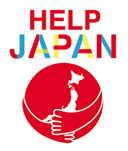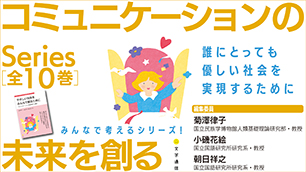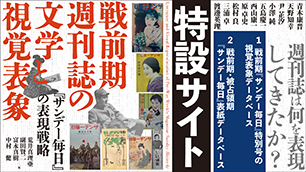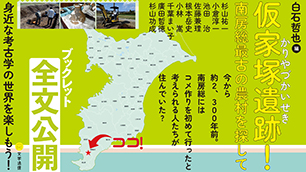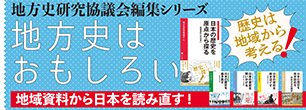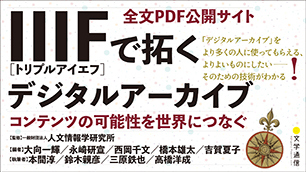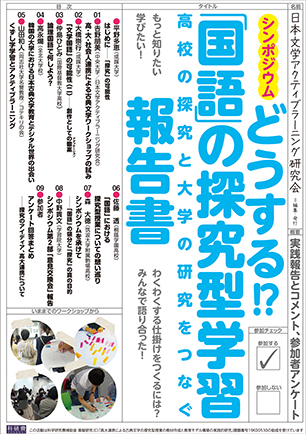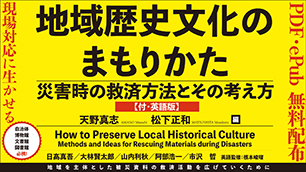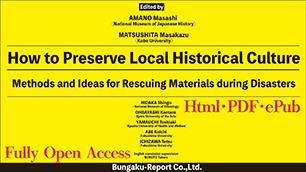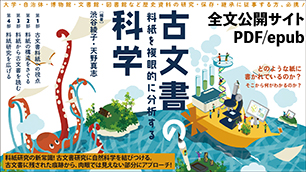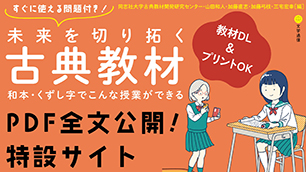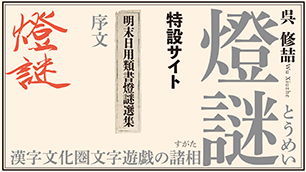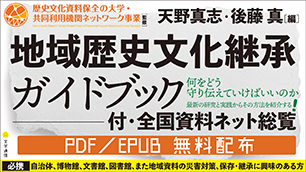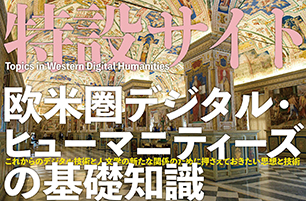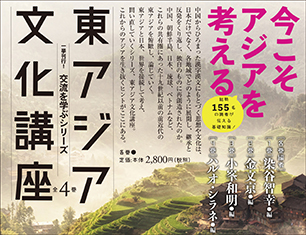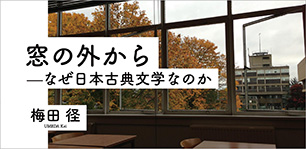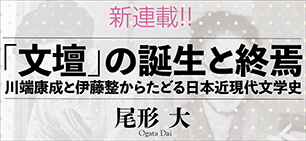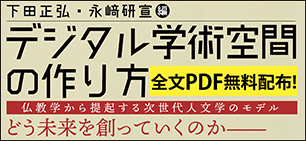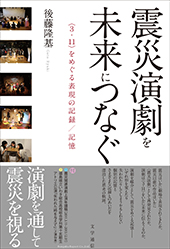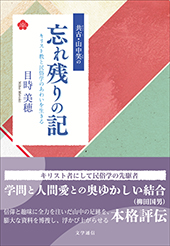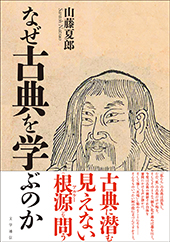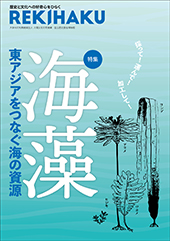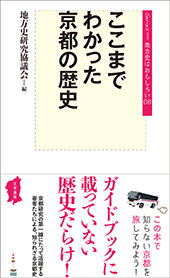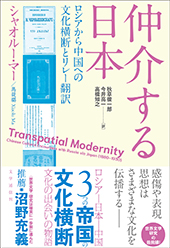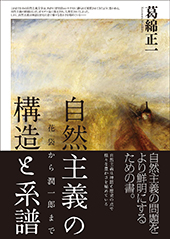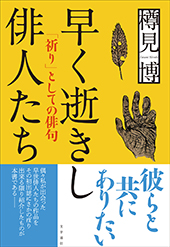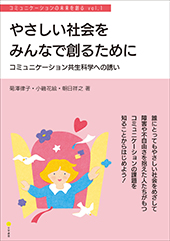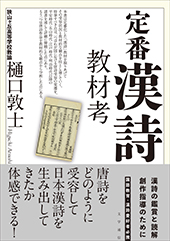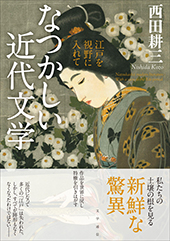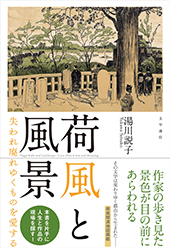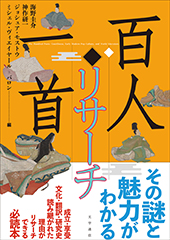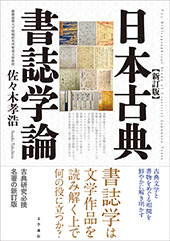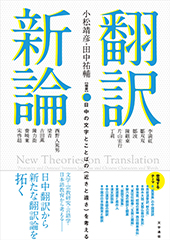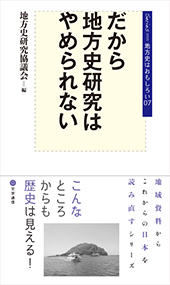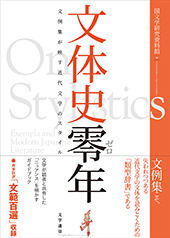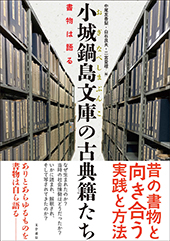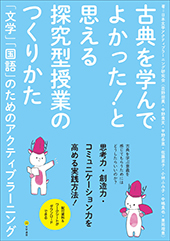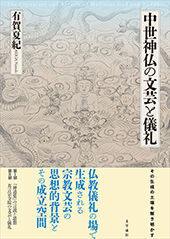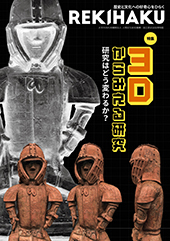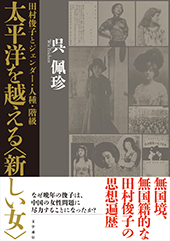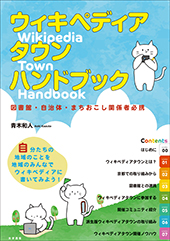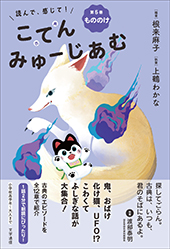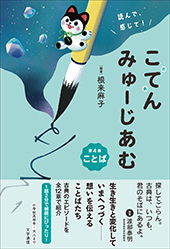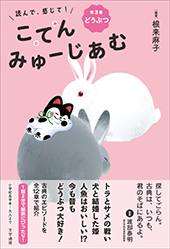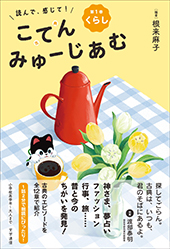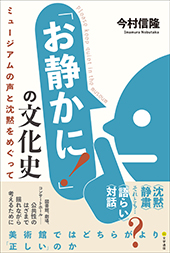Chapter 4 Rescuing Photographic Materials / MATSUSHITA Masakazu
Download PDF
Chapter 4
Rescuing Photographic Materials
MATSUSHITA Masakazu (Kobe University)
Introduction
Historical materials, the preservation target of the Siryo-net (Kobe), are undesignated cultural properties in private ownership. The rescue of these documents, detailing the history of communities and families following the Great Hanshin Earthquake, focused on local records maintained by long-established families and neighborhood community associations. The aim was to understand the historical and geographical background essential for restoring areas affected by the disaster. Meanwhile, photographic materials are found in any typical household, and depict the history of each person, family, and community. Specifically, when the general public participated in rescuing and cleaning photographs damaged during the Great East Japan Earthquake and the Kii Peninsula flood disaster of 2011, volunteers in the affected areas were strongly impressed by the method as a means to rescue the records and "memories" of families and people.
Thus, in this Chapter, we specifically discuss rescuing photographic materials from among family records. Since the time when digital cameras and mobile phones became popular, photographic records have been stored as digital data in various recording media. Therefore, I should discuss the rescue, storage, and restoration of digital media as well. However, since the allocated space is limited, I will define photographic materials discussed in this Chapter as black-and-white and color prints of photographs (photographic paper), pocket photo albums, and adhesive mount photo albums. We will discuss the steps taken from the rescue, drying, and cleaning of such photographic materials that are stored in a typical household.
1. Rescue and Temporary Storage of Photographic Materials
Wind and water damage obviously affects documents, but following an earthquake, damaged buildings can experience water leakage. Subsequent rain, snow, and tsunamis can also cause water damage to materials. Since earthquakes often lead to fire, fire and associated water damage can occur. In any case, water damage of materials from disasters cannot be avoided; therefore, we discuss the rescue of water-damaged photographic materials.
As we saw in the areas affected by the 2011 great earthquake, all manner of materials affected by tsunamis and floods are washed away from their original locations. Some are recovered by the Japan Self-Defense Forces, but in the worst case, they are lost forever. Even if materials are not washed away, when silver halide prints (typical black-and-white and color photographs) and negatives are immersed in water for a long time, the image layer (gelatin, silver halide, and pigments) becomes deteriorated, leading to images disappearing, dissolving, discoloring, or fading [Photo. 1: Photographs with the image layer dissolved due to a long exposure to water]. Specifically, decomposition occurs rapidly in hot and humid disaster-affected sites during the summer, which makes decomposition of the gelatin layer on the surface of the photographs and biological damage by insects more likely. In the case of floods and tsunamis, domestic wastewater, salt from seawater, and so on become adhered to the surface of photographs, which further promotes deterioration.

Photo. 1
While naturally drying water-damaged photographs, rescuers often discover that images are lost since some photographs have adhered to each other, albums are moldy, images have adhered to the protective film of albums, and so on [Photo. 2: Photographs that became adhered to the protective film of a pocket album due to tsunami damage].
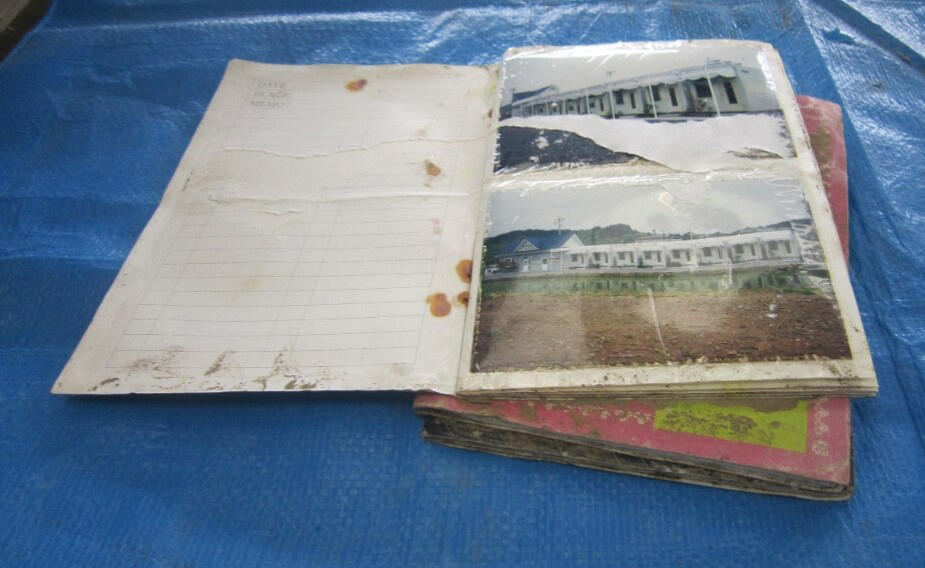
Photo. 2
Rescuing photographic materials happens more often by request than during patrols of affected areas. At rescue sites where the Siryo-net (Kobe) took the lead, such as during flood damage of Sayo, Hyogo Prefecture (Typhoon Etau, August 2009), a person found out about our rescue effort for damaged materials in a newspaper article and consulted us about photographs that had become adhered to water-damaged albums. We performed emergency treatment, such as cleaning the albums at the person's residence (removing mud), drying, and making copies by taking photographs with a digital camera. However, it was extremely difficult to perform tasks since there was no easy access to water and the missing floor provided no room to work [Photo. 3: Cleaning the damaged photographs in Sayo Town (Taken on October 12, 2009)]. Since 2011, we have been performing our tasks at locations with accessible water instead of the affected sites as much as possible.
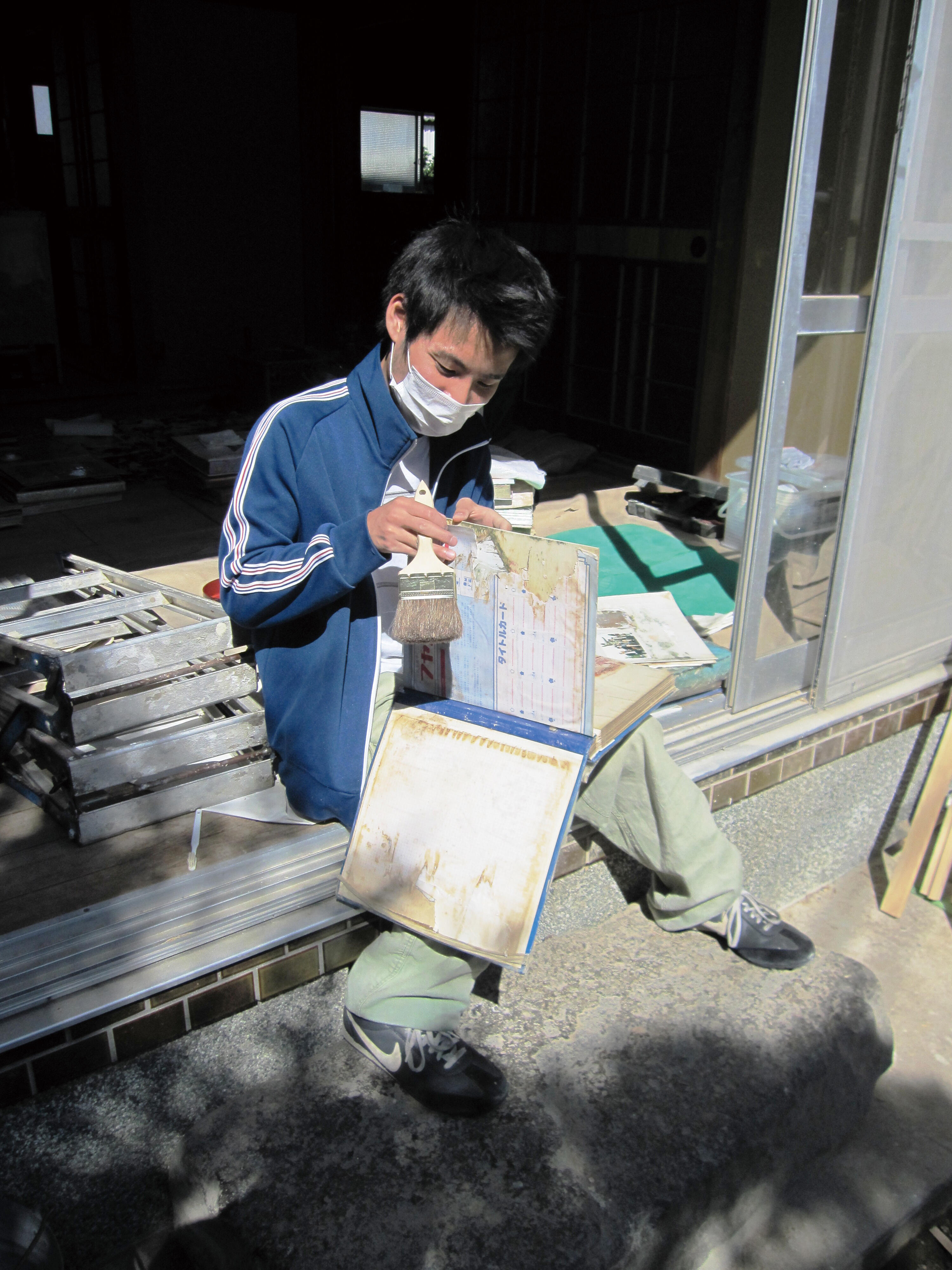
Photo. 3
As previously mentioned, if materials remain wet, deterioration of the surface will be promoted. To minimize the damage to the images, securing a freezer and temporary storage so that mold would not grow on photographic materials would be ideal. If a freezer cannot be secured, photographs should be dried in the shade using a fan, and so on. At temporary storage sites, humidity should be kept as low as possible.
When removing materials from the affected areas, a simple record of the current conditions, such as photographs of the damage, should be prepared. After confirming the number of damaged photographic materials (number of albums and so on), a written agreement of loan is created with the owners. Most important at such a point is a sufficient understanding by the owners regarding the treatment of damaged photographs. Since these tasks are mainly performed by volunteers with varying levels of skills, an agreement must be reached ahead of time that not all photographs will be fully restored, and photographic materials that are mostly of private information will be seen by many staff during the process. Specifically, cleaning makes a notable difference in how much of the image survives. In the case of heavily damaged photographs, cleaning will almost certainly remove the image layer. However, if left dirty, biological damage will further promote deterioration, thereby making the photographs impossible to view. Therefore, owners need to understand the advantages and disadvantages of each treatment.
2. Treatment of Disaster-Affected Photographic Materials
Below, we present the treatment policies for color photographs that have been water-damaged and soiled in floods and tsunamis by referring to the treatment of personal albums and photographs following the 2009 Typhoon Etau (flood damage of Sayo), tasks performed at Hiroshima Prefectural Archives following the torrential rain of August 2014, and tasks performed at Seki Cultural Properties Protection Center by the Gifu Museum Association following the Torrential Rains of July 2018.
The point to note while performing these tasks is not to inhale mold, mud, or dust when handling any other water-damaged materials. Therefore, we paid attention to the hygiene of volunteers by encouraging them to wear a dust mask and latex gloves, to practice hand washing and gargling, and to ventilate the rooms. Refer to the following in terms of materials used for the tasks [Photo. 4: An example of tools used to treat disaster-damaged photographic materials].
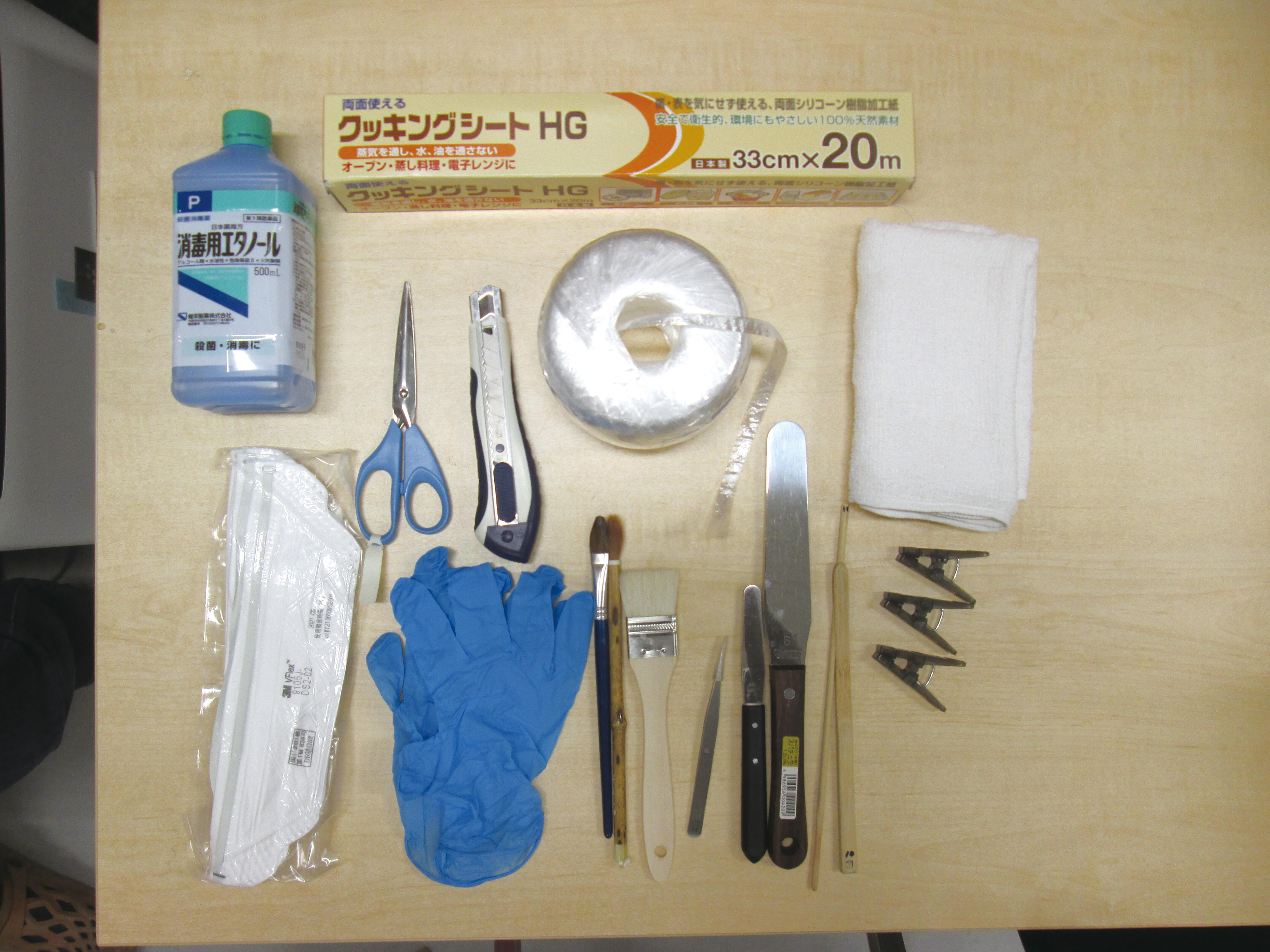
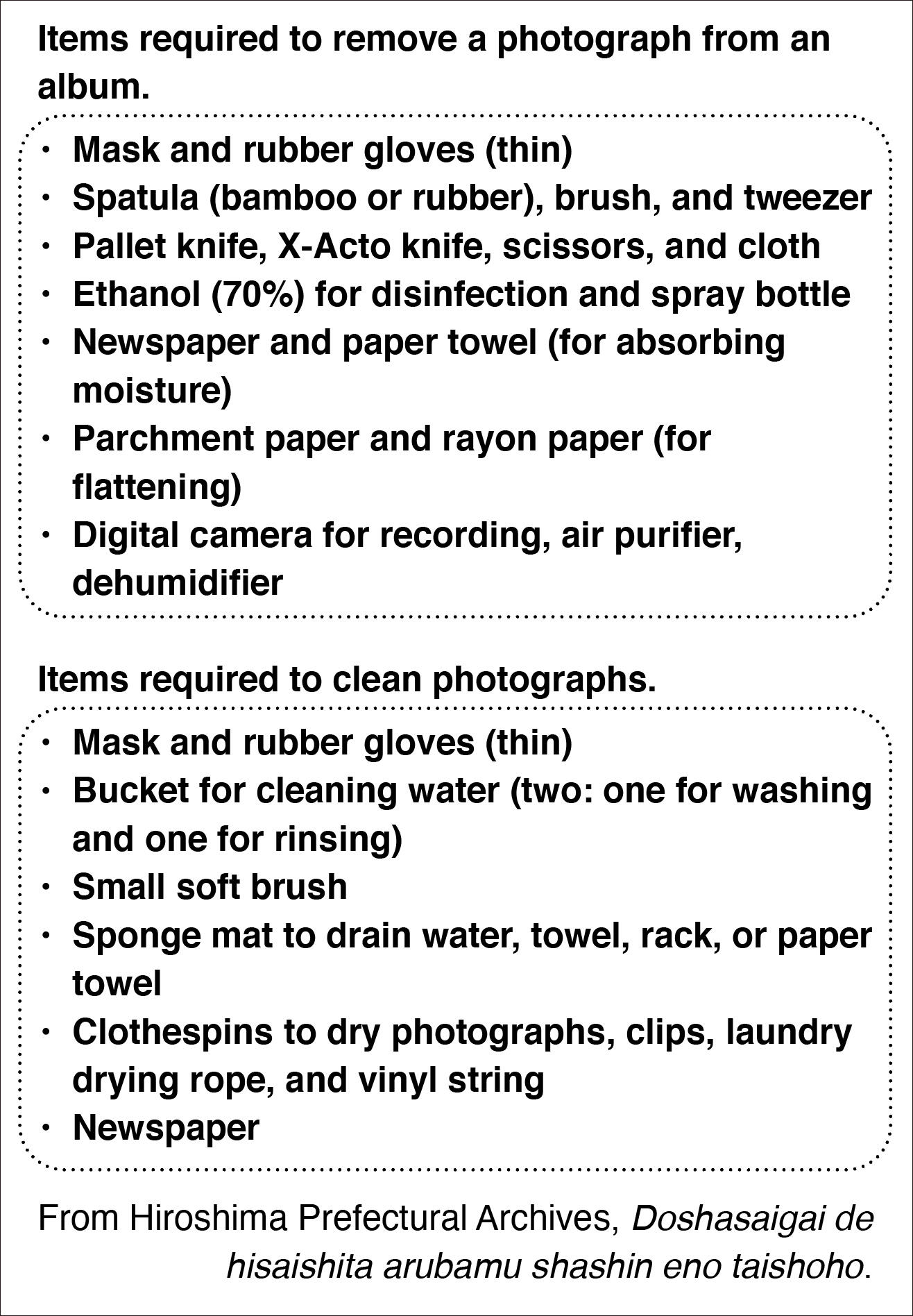
Photo. 4
Depending on the damage to the photographs, these tasks were not always performed according to the procedure. For black-and-white and heavily damaged photographs, we recommend having professional photographers perform the repair.
2.1. Recording Current Conditions and Removing Photographs from Albums
(1) Numbering albums and taking photographs
As examples of damaged photographic materials, we consider cases of photographs stored in pocket albums and adhesive mount photo albums, and also cases where photographs are kept in a bundle that has become adhered together. In all cases, since these photographs must be dried, the first step is to remove one photograph at a time. However, when separating photographs, images may become damaged. In addition, to record the information such as the order of photographs in an album, before taking albums or bundles of photographs apart, the current conditions must be recorded using a digital camera.
Each album should be numbered, and where pages can be opened, the entire page should be photographed. Specifically, notes written or inserted in pocket albums and adhesive mount albums often preserve the information about the photograph and must be recorded along with the relevant photographs.
(2) Removing mud from albums
First, mud on the outside of albums is removed. Mud on the cover, back cover, and text block is removed using a bamboo spatula, brush, paper towel, or cloth. If possible, albums are wiped using a firmly wrung-out cloth or are disinfected with a paper towel soaked with ethanol. Subsequently, the album is opened one page at a time, and mud and soil are removed one page at a time.
Dirt on the protective film of pocket albums and the adhesive mount must be removed with a bamboo spatula or brush. However, if there is moisture between the protective film and the surface of the photograph, pressing firmly on the film could shift the image. Thus, cleaning must be done with utmost care.
(3) Photographing the conditions after the removal of mud
As each page of an album is opened, the entire page is photographed using a digital camera or scanned with a scanner. If possible, it would be ideal to record one photograph at a time. This is because, when the protective film is removed or cleaned, the image may be lost.
(4) Drying albums
If possible, albums should be dried with pages open and standing. Using an air purifier, dehumidifier, or a fan, albums should be dried in a clean temporary storage with low temperature and humidity and with as little direct sun as possible.
(5) Removing photographs
If the damage is severe, such as with dirty water inside of the protective film, photographs must be removed from pocket or adhesive mount photo albums to be dried. The protective film is removed by running a knife along the outline of a photograph [Photo. 5: Removing a photograph from an adhesive mount album (taken on September 8, 2014)]. If there is dirty water between the protective film and the photograph, and forcefully removing the film would damage the image, or if the image has transferred onto the protective film, the protective film should not be removed. When removing a photograph from adhesive mount albums, photographs are peeled using a pallet knife or bamboo spatula. If this is not possible, the mount should be separated into front and back sheets, removing the photograph with the mount still attached.
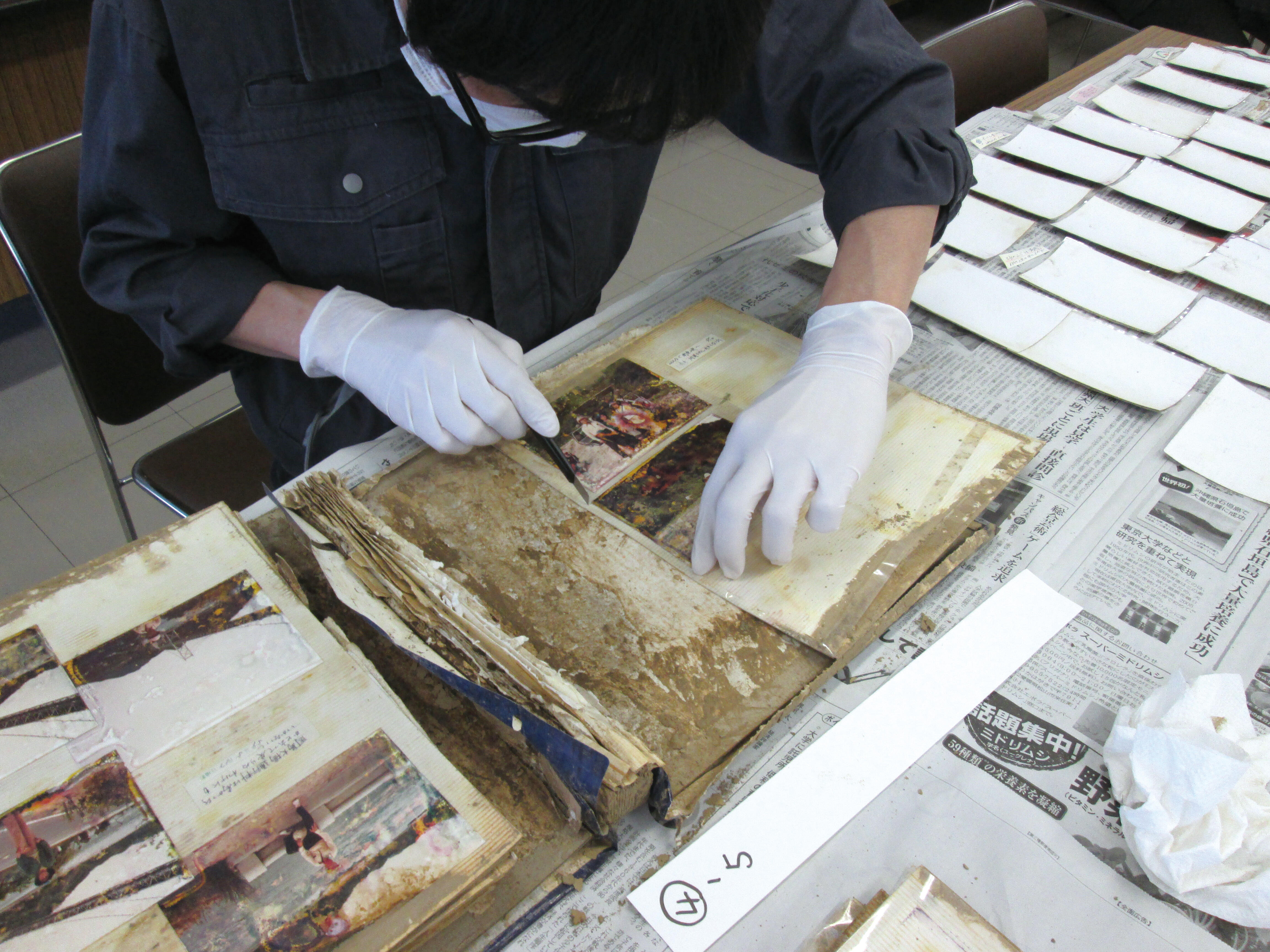
Photo. 5
2.2. Cleaning and Drying Photographs
Soiled photographs removed from albums continue to deteriorate if left as they are; therefore, dirt must be removed. However, since the image may be lost through cleaning, a copy must be created by taking photographs with a digital camera before cleaning. When handling photographs, latex gloves and a dust mask are required.
(1) Cleaning
Soiled photographs are soaked in a tray filled with water. Soil from the image layer is gently removed using a small brush or the pad of a finger. At such time, a corner or an edge of the photograph should be dipped in the water to confirm that the water does not remove the image. Specifically, subjects such as people should not be washed too aggressively [Photo. 6: Cleaning a photograph with a small brush].

Photo. 6
The back of photographs should be washed in the same manner. Attention should be paid to how photographs are held, such as pinching the edge of the photographs with fingers to avoid touching the image layer on the front. If the image layer of the photograph has already become dissolved and reds and yellows are marbled, the photograph should not be cleaned [Photo. 7: The surface of a marbled photograph].
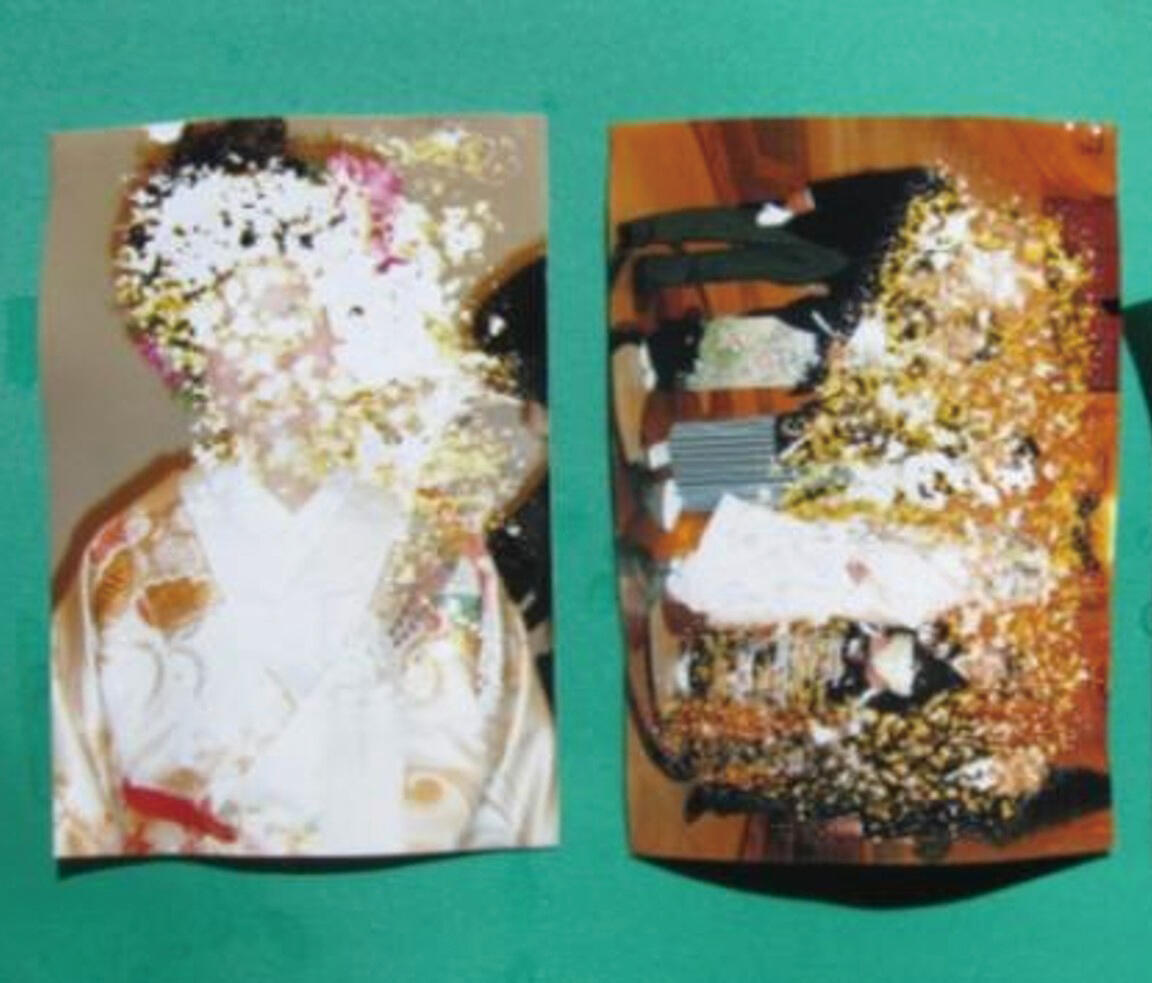
Photo. 7
(2) Rinsing
Lightly-washed photographs are placed in a tray with clean water and then lightly rinsed [Photo. 8: Rinsing a photograph].
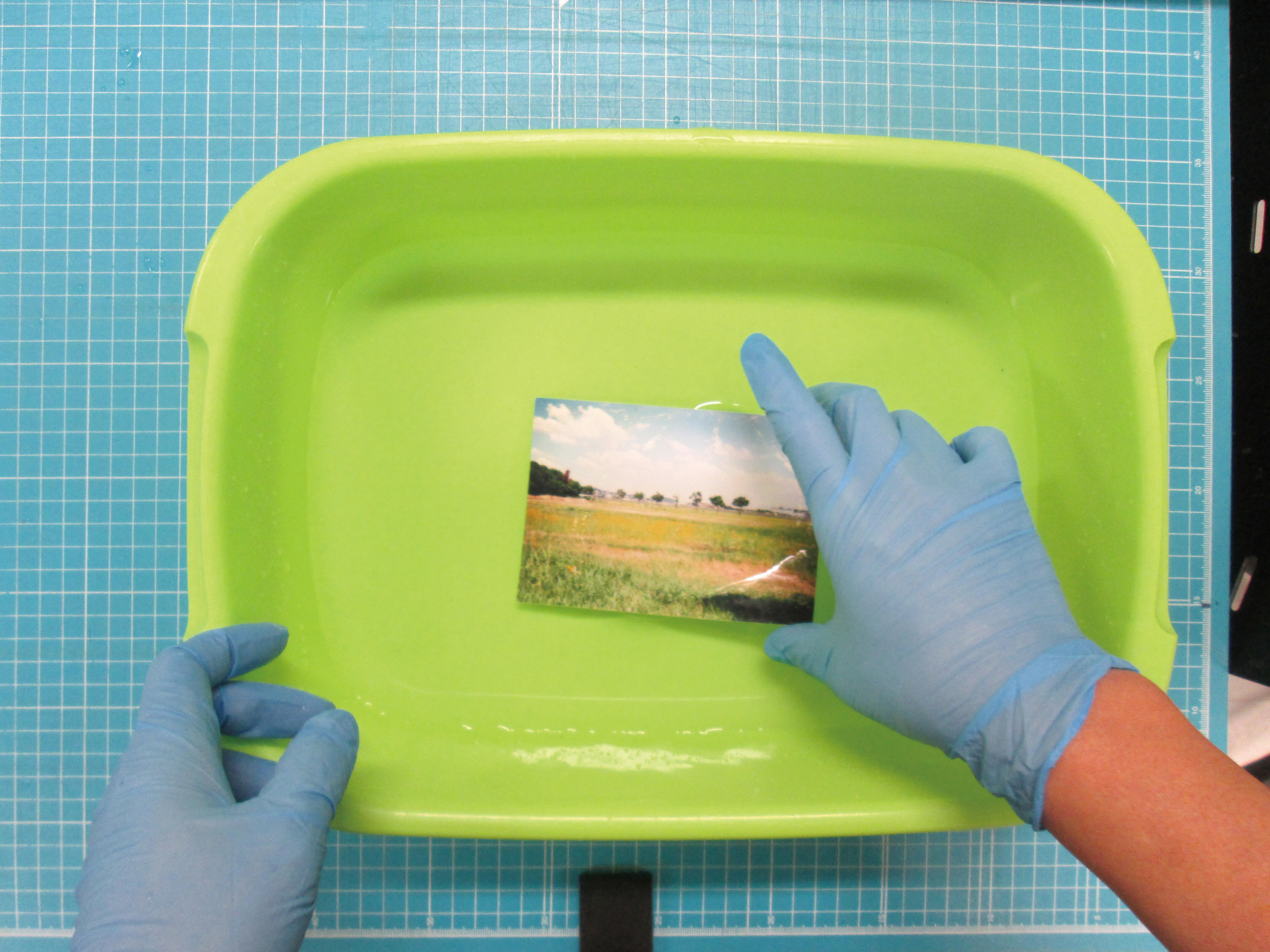
Photo. 8
(3) Draining water
Rinsed photographs are drained on paper such as newspaper or absorbent paper towel.
(4) Drying
Photographs are hung on a laundry rope or net using clothespins for drying. As much as possible, number tags for album and page numbers should be hung so that albums and orders are clear [Photo. 9: Drying a photograph]. If space for drying is limited, photographs could be placed flat on paper such as newspaper that absorbs water or placed on a slit board. If photographs have curled after drying, each photograph should be wrapped with rayon paper or parchment paper, then a weight placed on top to make them flat.
Dried photographs should be stored in a new pocket album if there is no stickiness. If stickiness remains after drying, a paper such as parchment paper is placed between the photographs before storing.

Photo. 9
2.3. If Photographs Are Not Being Cleaned
As previously mentioned, if the image layer of a photograph has dissolved and appears marbled, the photograph should not be cleaned. In addition, if the damage to the album is limited (no mud on the surface, no odor), it should be dried without cleaning. If photographs can be removed from pocket albums or adhesive mounts, these photographs should be individually dried.
Generally, to maintain the subjects of photographs, the damage to the image layer should be kept to a minimum. Although photographs were not cleaned in the Hyogo and Gifu cases, there were requests to clean photographs in Hiroshima even if this damaged the images, since marbled images reminded people of the disaster. As such, the treatment policy for such private photographic materials will change based on the owners' wishes. Therefore, before starting the tasks, the treatment policy needs to be agreed on with the owner.
2.4. Challenges Associated with Cleaning Photographs
Deciding how to store severely damaged albums and photographs is difficult. Wedding and birthday albums often have decorations on the surface, which should be maintained as much as possible. However, since damaged photographic materials deteriorate faster due to water damage, it is often difficult to keep the original. Therefore, along with the dried, damaged photographs, copies are prepared with a scanner or digital camera, and digital data are provided as DVD and so on. Furthermore, the Miyazaki Shiryo-Network used photographic data for digital restoration.
Photographs stored at typical households are not likely to receive government support, basically relying on volunteers. This is the same challenge as other undesignated cultural properties. However, in recent years, some companies have provided information on handling damaged photos or photography storage goods such as pocket albums. After the Torrential Rains of July 2018, the "Mono Committee" of the Gifu Museum Association led the treatment of damaged albums in Seki. Seki, Gifu Prefecture, mentioned the support they received on cleaning photographs and albums in their Disaster Victim Support System Guidebook that was distributed to disaster victims. Through this publication, disaster victims found out how to request cleaning of their damaged albums. These are cutting-edge attempts and model cases for the local government to handle disaster-affected photographic materials in the future1. Going forward, joint rescue activities by Shiryo-Networks, volunteer groups, governments, and companies with photography cleaning expertise will be effective.
Conclusions
Especially since printed photographs have gradually decreased since the start of 2000s, providing opportunities to inform people of how to give emergency treatment to photographs in albums from the pre-digital days is necessary. At the time of disasters, film companies and photography associations published guidelines on rescuing photos, and offered support, but it is also important to have the practical actions of volunteers who cleaned the photographs in the affected areas along with the rescue activities by Shiryo-Networks of each area2.
By rescuing materials that are packed with people's "memories" and "attachments," perhaps we can help ease the sense of loss and help regain normal life for people in the affected areas. Furthermore, when people have lost loved ones and their homes in a disaster, having items that are associated with the family will give them strength for mental recovery. This has been documented in many disaster-affected areas. As photographic rescue following disasters becomes more known, we hope that it conveys the importance of preserving individual records not only during disasters but even during normal times, and the significance of our disaster-affected material preservation activities that save the history of families and communities.
Notes
1 Seki City prepared the Disaster Victim Support System Guidebook (First Edition) following Typhoon Lan of 2023, informing disaster victims of emergency treatment support for disaster-affected ancient documents and photographs.
2 A list of photograph cleaning volunteers is available on the Disaster-affected Photograph Cleaning Activities @ Nagareyama blog page (updated on September 20, 2023: https://ameblo.jp/sunnyblog/entry-12744745156.html) (the website was last viewed on January 23, 2024).
References
Editorial Committee for the Rescue of Movable Cultural Properties (ed). Dosanbunkazai kyusyutsu manyuaru [Manual for Rescuing Movable Cultural Properties]. Kubapuro, 2012.
Hiroshima Prefectural Archives Leaflet, Doshasaigai de hisaishita arubamu shashin eno taishoho [How to Handle Albums and Photographs Damaged by Landslides] (December 2014), in: Hiroshima Prefectural Archives. Hozonkanri koza [Preservation and Management Lecture] (https://www.pref.hiroshima.lg.jp/site/monjokan/sub19.html)
ITAGAKI Takashi and KAWAUCHI Atsushi (eds). Hanshin-Awaji daishinsaizo no keisei to juyo [Formation and Acceptance of the Image of The Great Hanshin Earthquake]. Iwata-shoin, 2011.
SHOMURA Misato. "Heisei 30-nendo Monobukai Zigyo Sekishi no Suigai niokeru Osonarubamushashinto no senjoboranteia nitusuite no Hokoku [Report on the 2018 Mono Committee Project]", in: Gifu Museum Association "Koto Committee" (ed). Museums in Gifu, 183, Gifu Museum Association, September 2018, p. 3.
MATSUSHITA Masakazu. "Siryo-net (Kobe) ni yoru suison shashinshiryo no hozen okyusochi [Examples of Preservation and First Aid Measures for Photographs of Flood Damage by the Siryo-net (Kobe)]", in: The Journal of the Society of Scientific Photography of Japan, 84-2, 2021, pp. 72-79.
The Japan Society of Archives Institutes (ed). Rekka suru sengoshashin [Post-war Photographs that Deteriorate]. Iwata-shoin, 2010.
OHBAYASHI Kentaro. Shashinhozon no jitsumu [Photography Preservation Practices]. Iwata-shoin, 2010.
RD3 Project. Hisaishashin kyusai no tebiki [A Manual for the Salvage and Digitalization of extremely Damaged Photographic Materials. Kokusho Kankokai, 2016.
The 2018 Western Japan Torrential Rains "Preserve" Editing Team (ed). Nokosu. Nishinihon Gousaigai [Preserve. The 2018 Western Japan Torrential Rains]. ibid., 2021.
YAMAUCHI Toshiaki, "Taifuhigai ni atta shashinshiryo no hozon to shufuku ni tsuite [Preservation and Restoration of Photo Materials Damaged by Typhoons]", in: Kibi International University Research Advancement Center for Cultural Property (ed). Kibi International University Research Advancement Center for Cultural Property Bulletin, Cultural Property Information Studies, 4, March 2007, pp. 123-128; YAMAUCHI Toshiaki, "Shinkutoketsukansoho ni yoru shashinshiryo no hozonshori ni tsuite [Preservation and Treatment of Photographic Materials by Vacuum Freeze-Drying Method]" (ibid, pp. 129-134).
YOSHIKAWA Keita and YOSHIHARA Daishi. "Hiroshimadoshasaigai ni yoru hisaishashin arubamu no hozenkatsudo, "Preservation of Photo Albums Damaged by Hiroshima Landslides". The Siryo-net (Kobe) Newsletter, 77, December 2014, pp. 9-10.


